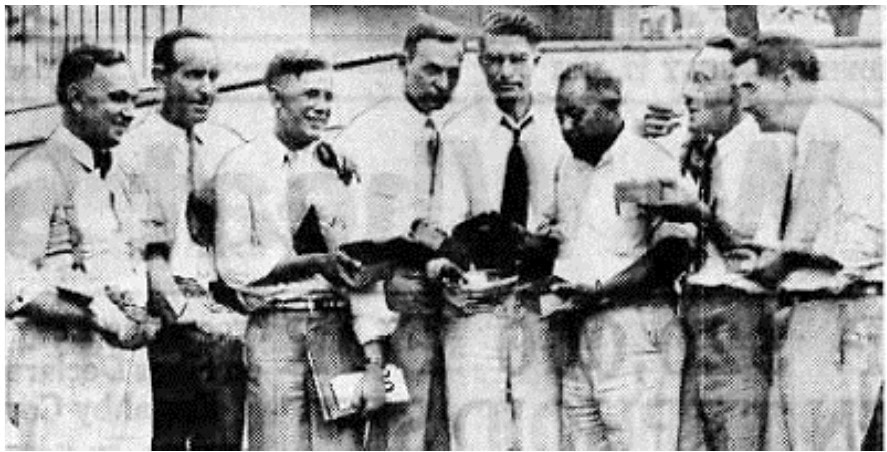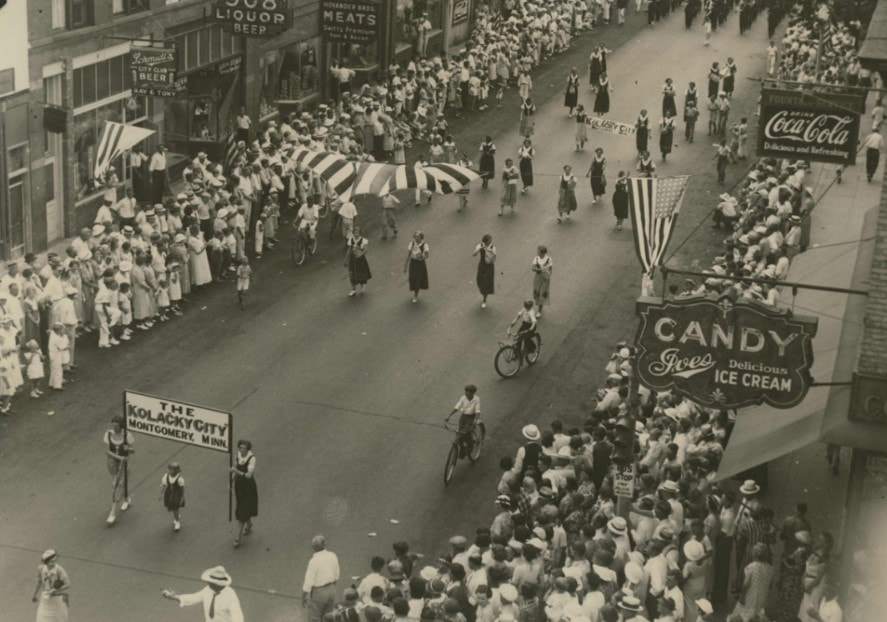This history article comes from one of our newsletters. Newsletters are a benefit of membership with the Hopkins Historical Society. Learn more here: |
Celebrating the Raspberry
by Mary Raabe
first published in 2014, updated in 2020
|
With winter behind us and spring in the air, our thoughts can’t help but turn to summer and our annual Raspberry Festival Parade. Do you know how it all began?
The year was 1935 and our country was living through difficult times. The Great Depression lingered on. Record heat blanketed the land, war clouds were gathering in Europe, unemployment was at 25 percent and to make matters worse, Babe Ruth hit his last career home run. But here in Hopkins, any feelings of despair were about to change. On a day in late June, Art Plankers, manager of the first Red Owl Store in Hopkins and James Markham, editor of the Hennepin County Review had lunch together. Plankers wanted to help the raspberry growers and he had an idea to share with Markham. Plankers had observed the farmers returning from the Minneapolis Farmers Market after selling their raspberries for only a dollar fifty cents a crate. Plankers thought the berries should be sold for much more. “Jim,” he said to Markham, “You could do a lot of good for these farmers by playing up the raspberry crop. Why don’t we put on a Raspberry Day? With your newspaper, you can publicize a festival throughout the area.” |
Markham agreed and with only 11 days to plan and a budget of $350.00, the two Hopkins men initiated one the most successful celebrations ever to emerge from the depression era. Committees were formed, fundraising began, farmers were contacted and bands were recruited. Pederson Dairy donated gallons of cream to go with the raspberries. Chaska Sugar Beets donated 100 pounds of sugar. A parade and evening dance were planned. Minneapolis Mayor Tom Latimer issued a proclamation to all Minneapolis residents: “Motor to Hopkins for “Raspberry Day”.
Hopkins prepared for 15,000 people. Twenty-five thousand came. 7,000 dishes of free berries were handed out. Art Plankers encouraged the farmers to sell their raspberries for $3.00 a crate. “We are going to get a lot of people who will be tickled to death to have a crate of raspberries for $3.00.” He was right and a crate of raspberries never again sold below $3.00. Raspberry Day continues to this day. The name has been changed to the ‘Raspberry Festival’, but we continue our many traditions and we still party into the night! |


